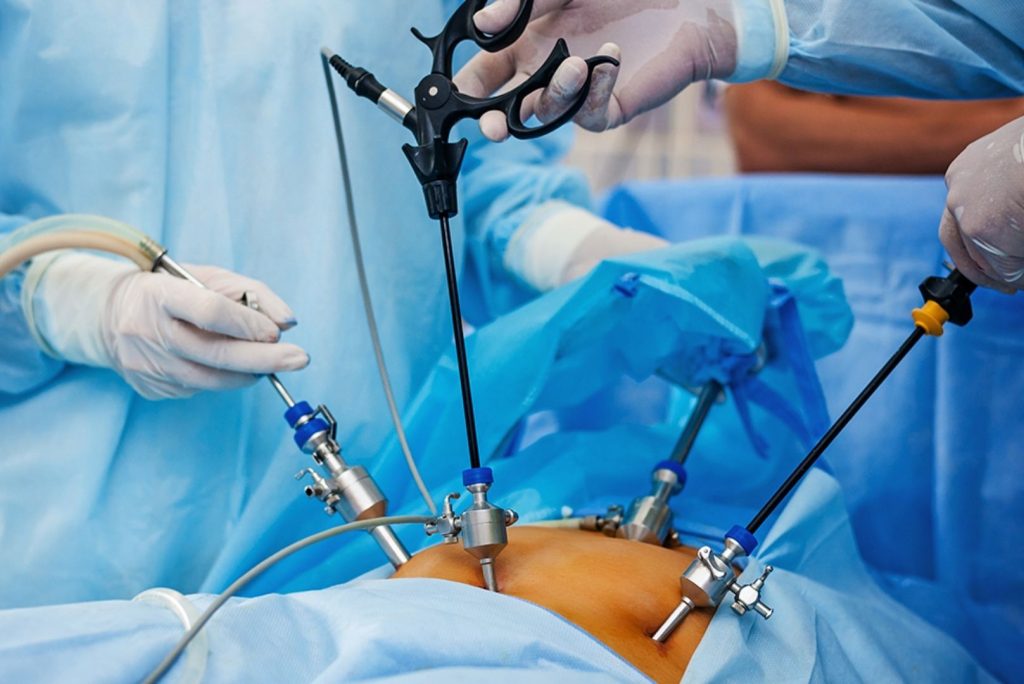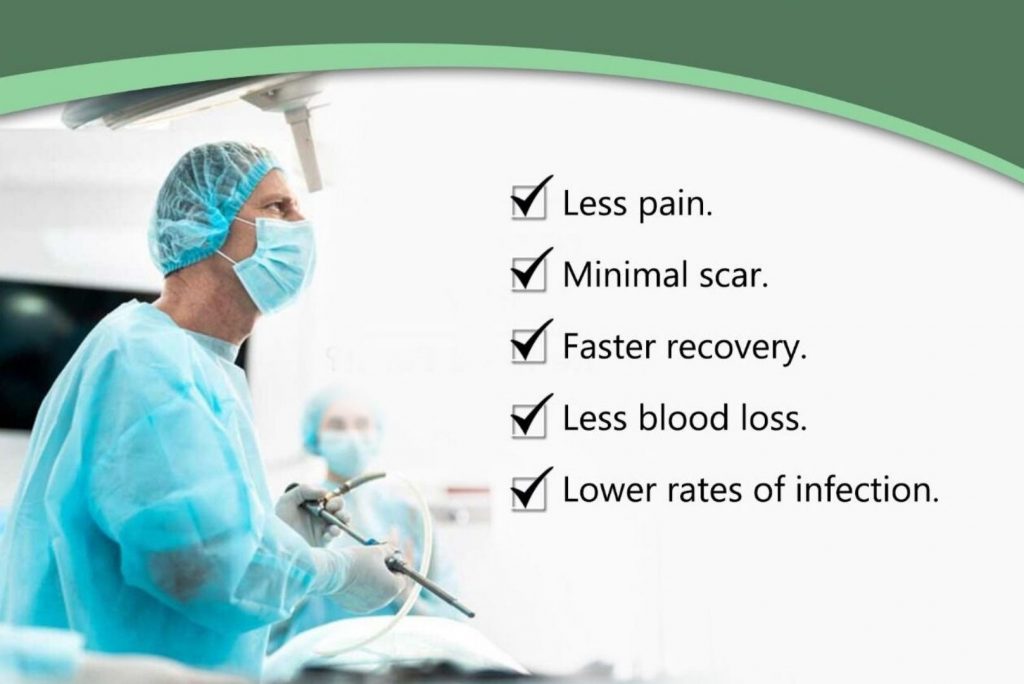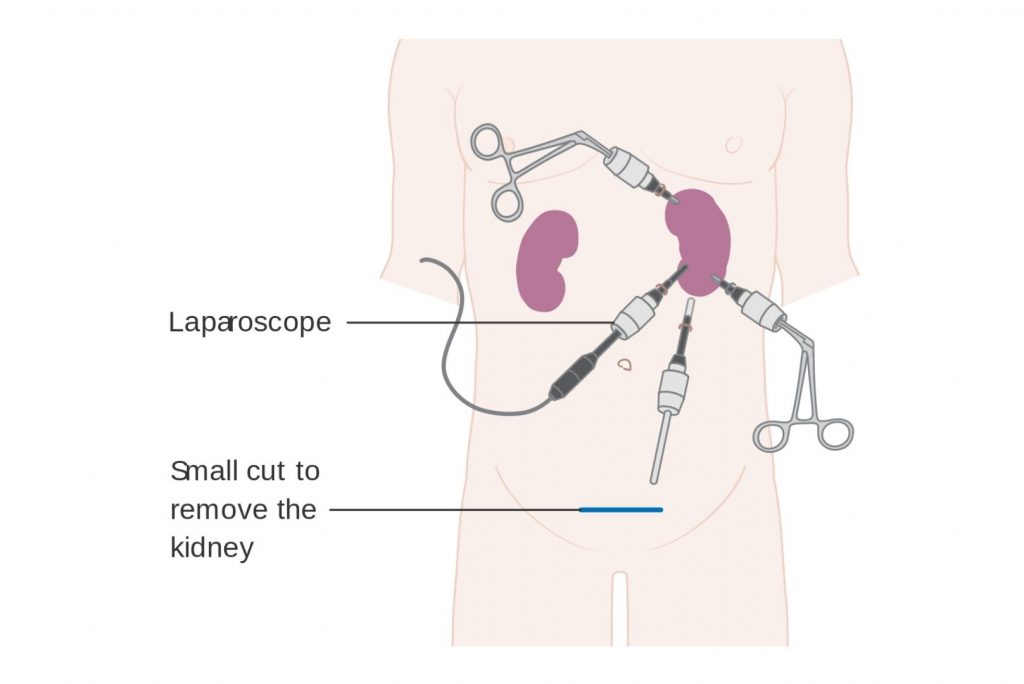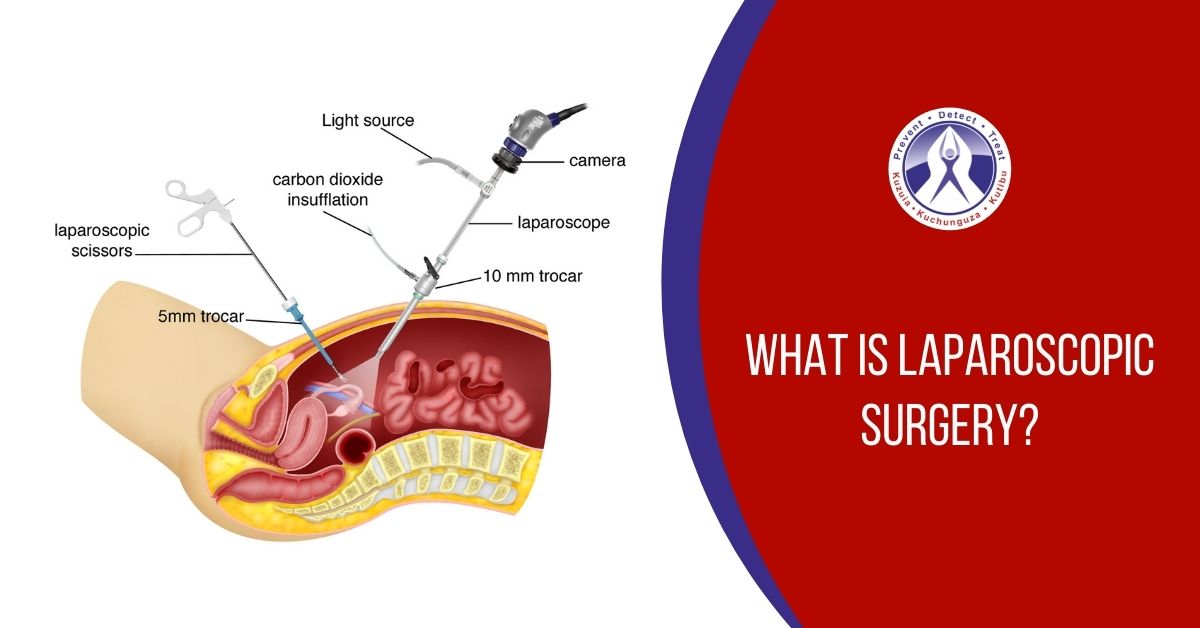What Is Laparoscopic Surgery?
932 viewsThe thought of going under surgery is never easy. Frightening thoughts and fear about the entire procedure are sure to disturb patients. However, advancements in medical science and surgical procedures have grown leaps and bounds. One such innovative procedure is laparoscopic surgery treatment.
Laparoscopic surgery is a minimally invasive surgery to examine or operate the abdominal region of the stomach and the pelvis. Its termed minimally invasive as the procedure involves only a small incision that is typically less than one centimeter. The Laparoscopic surgery treatment involves a laparoscope, an instrument having a thin tube, and a tiny high-intensity camera with light at the end that allows your surgeon to view what’s happening inside your body with the help of a video monitor. Laparoscopy is also known as the keyhole or bandaid surgery performed under general anesthesia without causing any major trauma to the patient. A low-risk surgery, with no deep cuts and incisions on the skin, this type of procedure allows patients to recover quickly.
Laparoscopy allows the medical team to see inside your body in real-time, without the need for an open surgery, which also means lesser cutting and less pain. Laparoscopy also helps in collecting samples of tissues for biopsy testing.
How is Laparoscopy Surgery performed?

Laparoscopic surgery treatment involves the use of general anesthesia given to patients under the prescription of a qualified anesthesiologist. This means that the patient will be asleep throughout the procedure and will not feel any pain whatsoever. Insertion of an intravenous line (IV) is done in the patient’s vein to achieve general anesthesia. Through this, your doctor can also provide you special medications and hydration fluids as per the need of the procedure.
Next, the surgeon makes an incision near the navel or below your belly button, depending upon the specific disease you need treatment for. The abdomen inflates with the insertion of a small tube called a cannula and gets filled with carbon dioxide gas. The camera attached to the laparoscope allows your doctor to view your organs more clearly in real-time. After the completion of the surgery, the instruments get taken out from your body. The incisions are closed with stitches and dressed with the help of surgical tape or bandages.
What kind of operations can be performed using Laparoscopic Surgery?
Laparoscopic treatments are available to solve numerous health problems catering to the patient’s medical condition. Most surgeries of the abdomen, pelvic cavity, and intestines can happen using laparoscopic techniques. Lately, laparoscopic surgical treatment has been no less than a blessing for patients due to its ability to provide quick recovery and faster relief to patients. Some of the most common laparoscopic surgeries performed by the expert medical team of Regency Medical Care include:
Laparoscopic Surgery for Hernia
A hernia is a condition in which an organ, a part of the intestine, or a fatty tissue bulges out through an opening of the abdominal wall. There are many factors that make one prone to a hernia, including childbirth or pregnancy, chronic cough, chronic constipation, continuous smoking, and certain other medical conditions. Laparoscopic surgery for hernia is important and the advancement in technology has made it the best choice for treating hernia.
Laparoscopic Surgery of Gallbladder
The gallbladder, located under the liver, stores bile that the liver produces which helps human beings in the absorption of food. Some individuals experience gallbladder stones that may go onto become the cause of gallbladder diseases. Laparoscopic surgery of the gallbladder is a minimally invasive surgical approach performed with the help of special tools. Insertions provide a clear view of the internal organs that aid in the removal of the gallbladder in the most convenient manner possible.
Laparoscopic Surgery for Endometriosis
Endometriosis refers to a condition wherein the tissue that lines the inside of a woman’s uterus grows outside the uterus. It gets caught in the pelvic and lower abdomen region. Laparoscopic surgery for endometriosis begins when the surgeon pushes the laparoscope through a small cut in the tummy to see inside the abdomen. This procedure helps removes cysts or removes some of the larger patches of endometriosis tissue.
Laparoscopic Surgery for Uterus Removal
The surgical removal of a woman’s womb or uterus refers to a hysterectomy. This procedure sometimes involves the removal of ovaries and fallopian tubes, along with the removal of the cervix in a total hysterectomy. Laparoscopic surgery for uterus removal requires only a few small incisions on the lower abdomen. In comparison to that, a traditional hysterectomy needs a 3-6 inch incision. As a result, patients experience less pain and lose less blood.
What are the benefits of Laparoscopic Surgery?

Advancements in medical science and technology have made laparoscopy one of the most sought-after treatment options available today. There’s no doubt about the fact that laparoscopy has many benefits compared to its counterpart which is the traditional open surgery. One of the prime benefits of laparoscopic surgery is that patients are able to recover much quicker and bounce back to their routine schedules and daily lives in no time.
- Fewer scars
Laparoscopic surgery is successful just through a small incision which means lesser scars on the patient’s skin post-operation.
- No blood transfusion required
The likelihood of blood transfusions in laparoscopic surgery is very low and rarely needed.
- Lowered blood loss
Patients experience lesser loss of blood due to small incisions.
- Short hospital stays
Patients getting admitted for laparoscopic procedures need not spend more than two nights at the hospital as compared to traditional surgeries that require at least a week’s stay at the hospital.
- Less pain
The fear of post-operative pain scares a lot of patients. Due to this most patients are seen escaping surgeries that may be detrimental to their health & wellbeing. With laparoscopy, the amount of pain reduces significantly wherein patients do not even require long-term pain relief medications once the stitches start healing.
- Rapid recovery
Any person undergoing a laparoscopic surgery treatment becomes hail and hearty in no amount of time. The recovery time for this procedure is barely 2-3 weeks after which a person can return to normal life without experiencing any discomfort or inconvenience.
- Lowered risk of infection
Larger scars get exposed to external contaminants and are more vulnerable to infections. However, this is not a worry with laparoscopy because of smaller cuts leading to smaller scars.
The risks involved in a Laparoscopy Surgery

After your procedure, it’s important to look out for any troubling symptoms and notify the medical staff and your doctor as soon as possible. The common risks involved with laparoscopy include:
- Blood loss
- Blood clots
- Fever or chills
- Fatigue
- Shoulder or back pain
- Abdominal pain, inflammation, or swelling
- Reactions to anesthesia
- Redness, bleeding, drainage at the surgery site
- Nausea or vomiting
- Dizziness or lightheadedness
- Shortness of breath
- Difficulty in urinating
Important things to keep in mind before your Laparoscopic Surgery
- Share your medical history with your doctor in detail including a list of all the medicines you consume on a daily basis (vitamins, supplements, over-the-counter medicines)
- Share food allergies or medicine allergies if any with your medical team
- Do not eat or drink anything 12 hours prior to your surgery
- Remove all sorts of jewelry or metal items that you may be wearing before the procedure.
- Remove nail polish if any before surgery
- Avoid heavy exercise or weightlifting for a few weeks post-operation
- Avoid driving your car or any strenuous activity post-surgery
- Stay hydrated and reach out to your doctor in case of any emergency
Conclusion
We have come a long way from the traditional methods of surgery. Laparoscopic Surgery has truly revolutionized surgical procedures in Africa and is continuously evolving in order to provide more benefits to patients. The expert and highly qualified team of surgeons at Regency Medical Care strive to go out of their way to provide exceptional care to their patients The medical staff, team of doctors, and surgeons have years of experience in laparoscopic medical treatments along with having the most up-to-date knowledge and training in surgical techniques.
To talk to our doctors or know more about laparoscopic surgeries, book an appointment here.

